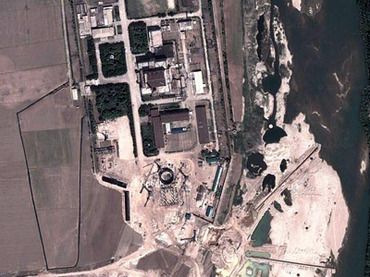North Korea appears to have restarted a reactor that produces plutonium, making good on threats to boost its stockpile of nuclear weapons
North Korea appears to have restarted a reactor that produces plutonium, making good on threats to boost its stockpile of nuclear weapons, US analysts said Wednesday.
Satellite imagery taken on August 31 shows white steam coming out of a building next to the five-megawatt plutonium reactor at Yongbyon, the US-Korea Institute at Johns Hopkins University alleged.
The image shows that North Korea "appears to have put the reactor into operation," researchers Nick Hansen and Jeffrey Lewis wrote on the institute's blog, 38 North.
The reactor "is capable of producing six kilograms of plutonium a year that can be used by Pyongyang to slowly increase the size of its nuclear weapons stockpile," it said.
North Korea had declared in April that it would restart all facilities at Yongbyon to "bolster the nuclear armed force both in quality and quantity."
The Institute for Science and International Security, another US think tank that has closely followed North Korea, reached similar conclusions after observing the steam from Yongbyon. The institute said that the restart of Yongbyon did not preclude a new diplomatic effort, saying that North Korea would still need two to three years to discharge irradiated fuel containing plutonium.
"There remains time to negotiate a shutdown of the reactor before North Korea can use any of this new plutonium in nuclear weapons," David Albright and Robert Avagyan wrote in an analysis for the institute. "If a shutdown is achieved in the next six months, the reactor would have produced very little plutonium," they said.